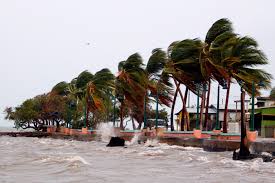Hurricane Melissa set to wreck Jamaica: Catastrophic winds and 30-inch rainfall expected

hurricanes
Jamaica is on high alert as Hurricane Melissa, a devastating Category 5 storm, barrels toward the island with maximum sustained winds reaching 185 mph. Meteorologists warn that the hurricane, described by officials as “life-threatening,” poses catastrophic risks, including torrential rainfall, massive storm surges, and destructive winds.
The National Hurricane Center (NHC) reported that as of Tuesday morning, the eye of Melissa was located approximately 40 miles southeast of Negril, Jamaica, moving north-northeast at roughly 9 mph. Authorities urge residents to seek shelter immediately, emphasizing that this may be the last opportunity to protect lives. “Failure to find adequate shelter may result in serious injury or loss of life,” the NHC cautioned in its latest advisory.
Record-Breaking Strength
Hurricane Melissa has intensified rapidly, making it the strongest tropical cyclone worldwide in 2025. According to meteorologists, the storm surpasses the Western Pacific’s Typhoon Ragasa in intensity. The hurricane is predicted to bring unprecedented rainfall, with some areas expecting up to 30 inches of precipitation. Jamaica’s mountainous terrain increases the likelihood of destructive mudslides, compounding the threat to communities across the island.
Melissa is on track to unleash a life-threatening storm surge along Jamaica’s southern coast, with waves potentially reaching up to 13 feet. The hurricane’s eyewall, which contains the strongest winds, is likely to cause total structural failure, especially in elevated areas where winds can be up to 30% stronger than at ground level.
Already Deadly
The hurricane has already claimed lives across the Caribbean. At least three fatalities have occurred in Jamaica, primarily during preparations for the storm, while additional deaths have been reported in Haiti and the Dominican Republic. Emergency officials continue to work to ensure that vulnerable populations are evacuated and that shelters are prepared to accommodate those in need.
Community Preparedness and Response
In Kingston, the capital city, local authorities have mobilized heavy-duty equipment and emergency services to minimize damage. Mayor Andrew Swaby emphasized the importance of quick recovery after the storm passes, noting that pre-positioned resources are critical to restoring infrastructure and government operations swiftly. Residents are also taking precautions at home, stocking up on essentials such as food and water to last at least a week.
Many Jamaicans remain in high spirits despite the looming danger, with neighbors checking on one another and communities coordinating preparations. While shelters are available across the island, reports indicate that usage remains low due to misinformation about fees, which officials have confirmed is false.
Forecast and Path
The hurricane is expected to make landfall within hours, battering the island with extreme winds, heavy rainfall, and destructive storm surges. Following Jamaica, Melissa is forecasted to move toward southeastern Cuba and the Bahamas, though it is not expected to directly threaten the U.S. mainland. Meteorologists caution that slow-moving hurricanes like Melissa are particularly dangerous because their prolonged impact can lead to extended periods of flooding and wind damage.
Experts urge everyone in Melissa’s path to remain indoors, ideally in interior rooms without windows, and to take additional protective measures such as using mattresses or helmets for safety.
FAQ
Q: When is Hurricane Melissa expected to hit Jamaica?
A: Landfall is anticipated within hours of Tuesday morning, Oct. 28, 2025.
Q: How strong are the winds?
A: Maximum sustained winds are recorded at 185 mph, with stronger gusts possible in higher elevations.
Q: Is the U.S. mainland at risk?
A: No, the hurricane is expected to remain over the Caribbean and move away from the U.S.
Q: How much rainfall is expected?
A: Certain areas could receive up to 30 inches of rain, with isolated locations seeing even more.
Q: How can residents stay safe?
A: Stay indoors, ideally in interior rooms without windows, and use protective measures like helmets or mattresses. Follow all official advisories.


